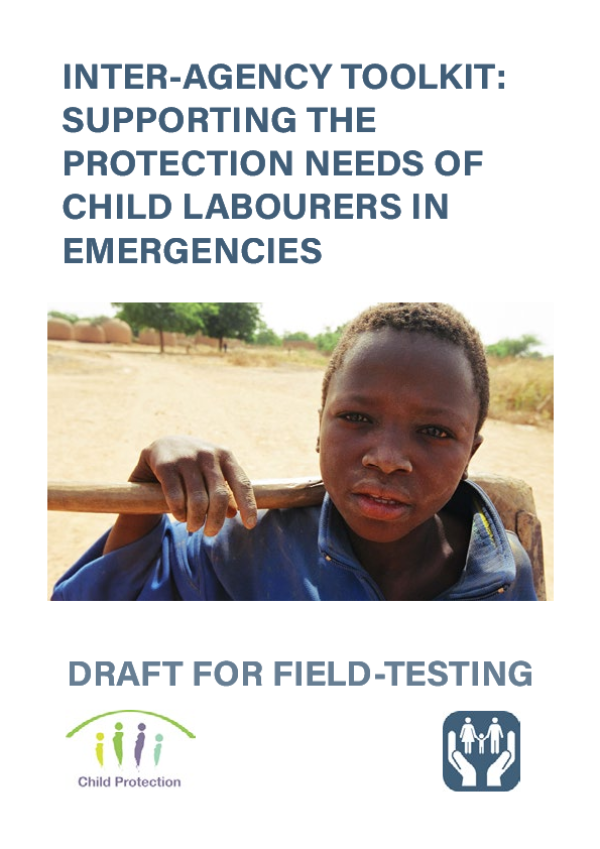
Inter-Agency Toolkit: Supporting the protection needs of child labourers in emergencies

Historically, the response to child labour in emergencies has been inadequate, but it is increasingly recognised as a growing issue in many emergencies, and is no longer only considered a development issue. With children’s needs addressed more holistically through case management and systems approaches it is gaining prominence as a key child protection concern during humanitarian crisis. The primary purpose of this guidance is to support child protection programme managers and advisors to:
- Set priorities, design strategies and implement activities to address and prioritize child labour interventions as a life-saving activity;
- Coordinate with humanitarian, government and development actors across sectors to address child labour in emergencies as part of a systems strengthening approach to reach the most vulnerable children;
- Strengthen situational analysis to improve the understanding of the present and future risks if there is no intervention; and
- Ensure no harm is done during emergency responses: Set priorities, design strategies and implement activities to do no harm and prevent child labour and its worst forms worsening.
This toolkit has been developed through strong inter-agency collaboration at the global level in support of the Minimum Standards for Child Protection in Humanitarian Action, 2012 (CPMS), Minimum Standard 12 Child Labour. During 2016 and 2017, it is being shared and used in order to gather feedback on its content, format, and usability, to ensure it meets the needs of humanitarian child protection practitioners in the field and others who wish to design and implement responses to child labour in humanitarian contexts.
- 181 vues
